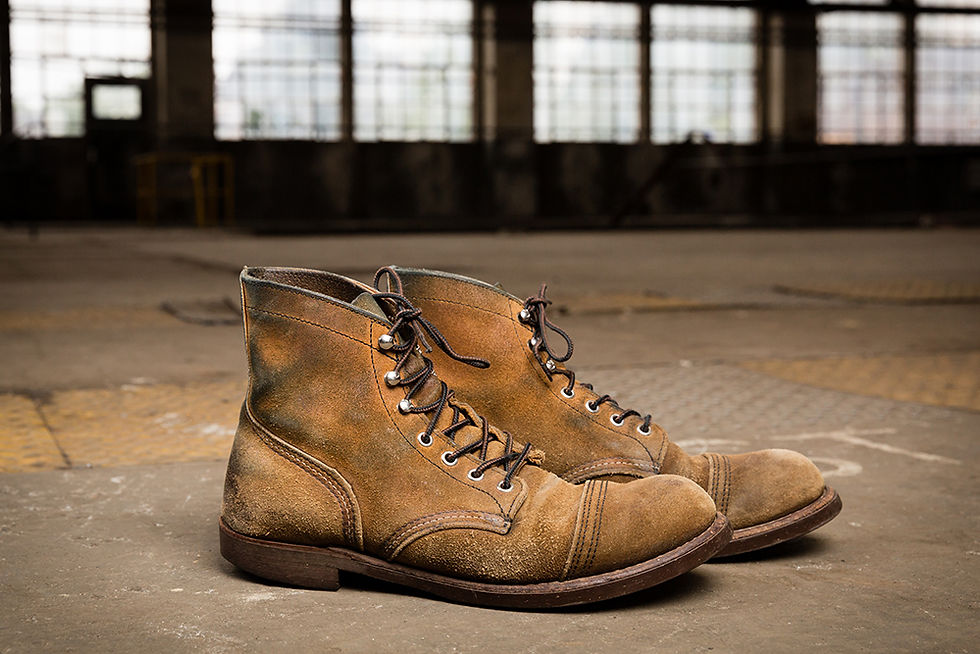Leather, like other materials, possess different grades of quality that helps to determine which type of leather is best used for a particular product.
But how does this matter to a retail consumer like you and me, you wonder? Well, imagine you're buying a leather belt and you have a choice between full-grain and top-grain leather at the same price. You would have no idea how to differentiate between which type of leather is better, potentially causing you to buy a leather product of inferior quality.
These are the commonly-accepted grades of leather, ranked from highest to lowest:
Full-grain leather
Top-grain leather
Split-grain leather
Bonded leather (technically not 100% leather)
As leather restoration experts, let Honest Crafters be your guide to helping you make better informed purchasing decisions by breaking down the various leather grades available on the market today.
Splitting the hide
As we all know, leather comes from the hide of an animal, such as a calf or cow. It goes through a process of splitting before it is tanned and treated to be used for products. This splitting process is crucial in understanding how grades of leather are determined.
Rawhide (the raw skin of the animal) in its untouched state is too thick to be used to make leather items. How thick the split should be is dependent on the customer and only the top cut is taken into consideration.
The top cut is usually used for top-quality leathers and are the most valuable cut of the hide. It contains the full grain of the hide.
The bottom cut are the 'leftovers' that are used for lower-quality leathers and can be subjected to further splitting.
Full-Grain Leather

Vachetta Leather is a popular form of full-grain leather, mainly used by Louis Vuitton.
Full-Grain Leathers are widely considered to be the highest grade of leather available on the market. It is the only grade of leather that retains the full grain of the hide, making it durable and long-lasting. This enhanced durability means that in most cases, leather products that use full-grain leather fail because of stitching issues and not the leather itself. It's naturally means it ages better and forms a beautiful patina in time. Common types of full-grain leathers include vegetable tanned leather (e.g. LV's Vachetta leather) and distressed leather.
Top-Grain Leather

The differences in treatment and processing can be seen in this comparison.
Top-Grain Leathers are less clear-cut, whereby there can be a wide range of leathers that are classified under top-grain. However, both Full-Grain and Top-Grain leathers share a common feature - they are both made from the top cut of the hide.
Where top-grain and full-grain leather differs is that top-grain leather goes through more processing and treatment, whereby its surface is sanded, buffed, and pigmented - clearing it of blemishes and scarring, and giving it a uniform, smooth texture. This treatment also gives it better water resistance than full-grain leather.
Split-Grain Leather

RoughOut leather is a popular form of split-grain leather mainly used for boots.
Split-Grain Leather does not retain any grain from the hide, and is made from the bottom cut of the hide. Suede is one of the most common forms of split-grain leather, where it is used to make inner linings and exteriors of leather products. RoughOut leather is also another popular choice to make exteriors for items such as boots.
Bonded Leather

What usually happens with bonded leather.
Bonded Leather can be considered the 'worst grade' of leather, even though it technically shouldn't be considered leather. Bonded leather is, as its name implies, is scraps of leather, vinyl, adhesives, and fabric bonded together. It is the least resilient form of leather and better quality leather options should always be preferred when purchasing leather items.
Closing Notes
We at Honest Crafters hope you enjoyed our brief breakdown of leather grades! Making informed decisions is important when buying leather items that are crafted with quality. If you need your leather bag, shoes, or items repaired, why not get it restored with Honest Crafters? Click here to get started!
If you enjoyed reading this and want more, you can like us on Facebook, follow us on Instagram , and even check us out on TikTok!

Understanding the grades of leather is crucial for making informed purchasing decisions, whether it's for a belt, jacket, or furniture. Choose always a firm that specializes in Vinyl & Leather Repair, helping you maintain and restore your valuable leather goods to keep them looking their best.
This idea of these grades/tiers/types/classifications (whatever) is actually a myth or urban legend of sorts in my industry. The way it's usually presented it's actually just a description of what's done (or not done) to a leather's surface, which is just one tiny factor that goes into making good leather.
Let me give you the rundown on these “leather grades”. Real leather grading is a thing but it's more about the amount of defects on an individual hide and varies by tannery; there is no uniform system.
I work for a leather goods company based in the USA that my dad started in 1969 and we've spent millions on leather over the years from some of the best tanneries in…